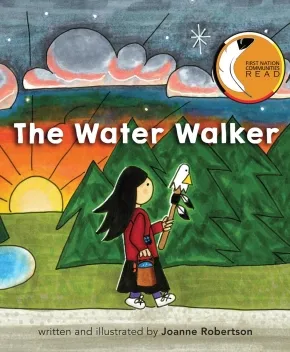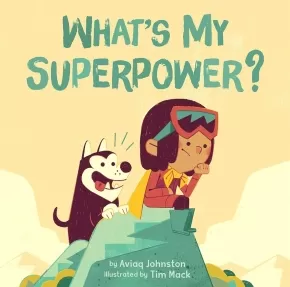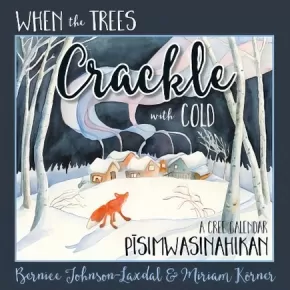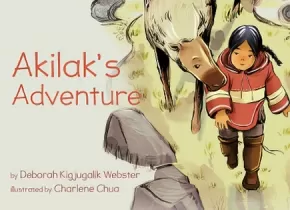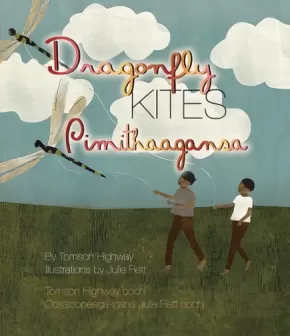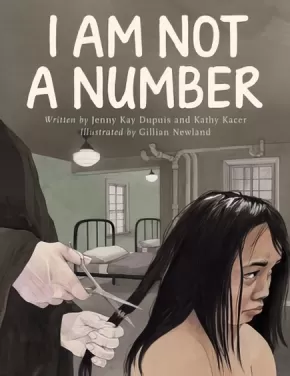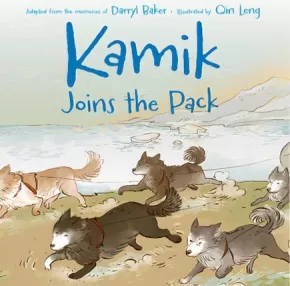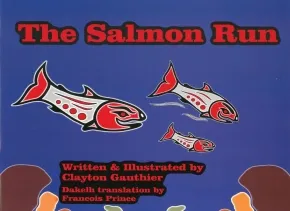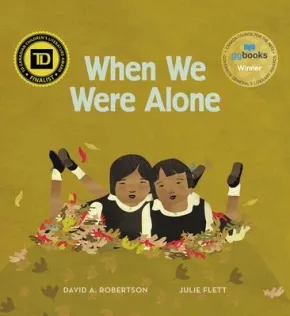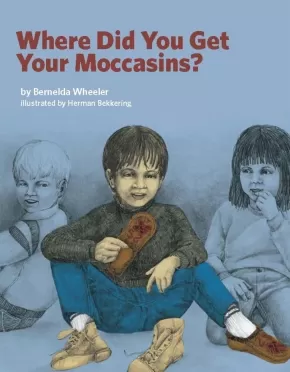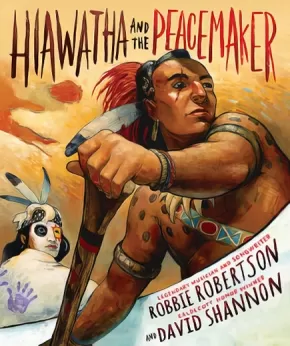
From Sea to Sea to Sea 2018 Edition
16
-
30
of
76 Results;
Sort By
Go To
of 6
Nimoshom and His Bus (HC) (2 in Stock)
$19.95
Artists:
Format: Hardcover
Text Content Territories:
Indigenous Canadian; First Nations; Cree (Nehiyawak);
ISBN / Barcode: 9781553797081
Synopsis:
Synopsis:
Nimoshom loved to drive the school bus. Every day, on the way to and from school, he had something to say. Sometimes, he told the kids silly stories. Sometimes, he taught the kids a new word in Cree.
Nimoshom and His Bus introduces basic Cree words. A glossary is included in the back of the book.
Reviews
"Through accessible language and engaging visual resources, readers are introduced to basic Cree as Nimoshom responds in this language to the children who ride his bus.... The illustrator’s varying the visuals between full double spreads and single page illustrations keeps the pacing lively. Amidst a rural fall setting, with woodland animals, children, and the school bus, Nimoshom’s humorous nature shines through these gentle illustrations. At the end of this story, you just want to give Nimoshom a great big hug!"
— Anita Miettunen, CM: Canadian Review of Materials
"In this bilingual book, readers follow a bus driver picking up kids and dropping them off before and after school. Like the students on the bus, readers quickly learn that the driver's native language is Cree, and he often speaks to them in his native language. Readers learn that "Nimoshom" means "my grandfather" and that "Ekosani" means thank you" as the author (of Cree descent herself) weaves Cree words into the text, and each new spread almost feels like a gentle wave: yes, we're subtly learning new words, but it never feels strenuous or forced, rather it's calm and poetic."
— Let's Talk Picture Books
"While Penny M. Thomas' story is not a plot-driven allegory or a message-based lesson, Nimoshom and His Bus is a sweet introduction to some simple Cree words in the context of a common-place activity for many children.... Karen Hibbard who uses watercolours and pastels to create a gentle background for Nimoshom's day on his bus gives the story a grassroots mood, highly appropriate for a routine day of activity and interaction for this bus driver and his charges. It's very relatable."
— Helen Kubiw, CanLit for Little Canadians
"If you're a regular reader of AICL, you know that we're always delighted by books by Native writers--especially ones set in the present. Books like Nimoshom and His Bus provide Native children with mirrors that non-Native children find in abundance.... I highly recommend Nimoshom and His Bus! It'd be a simple thing to use other Native words in addition to--or instead of--the Cree words in the book.
— Debbie Reese, American Indians in Children's Literature
Educator Information
Recommended for ages 4-9 / grades K-4.
Recommended for Grades K-4 for the following subject areas: English Language Arts, Social Studies.
This book is included in the Indigenous Books for Schools database from the Association of Book Publishers of BC. It is recommended for K to 3 classrooms for Career Education, English Language Arts, and Social Studies.
Additional Information
24 pages | 9.00" x 7.00"
The Sockeye Mother
$23.00
Artists:
Format: Hardcover
Text Content Territories:
Indigenous Canadian; First Nations; Gitxsan (Gitksan);
ISBN / Barcode: 9781553797395
Synopsis:
Synopsis:
To the Gitxsan people of Northwestern British Columbia, the sockeye salmon is more than just a source of food. Over its life cycle, it nourishes the very land and forests that the Skeena River runs through and where the Gitxsan make their home. The Sockeye Mother explores how the animals, water, soil, and seasons are all intertwined.
1 SMALL FRY
There’s a strong undertow today. The turbulent waters caress the backs of the little semelparous life forms emerging from their gravel nests. A small free-swimming fry bears witness to the currents of spring, after spending weeks developing and using up its nutritious yolk sack. It’s one of few remaining fry leaving its long winter’s home to seek out nursing waters.
This is the time of Wihlaxs (the black bear’s walking moon), which is early spring to the Gitxsan peoples of the Pacific Northwest Interior. Change is in the air, the days grow longer, and renewal is the life force that guides the world around the little fry’s waterways. Flora cells are starting to stir, preparing to bud and bring green to the landscape. Stores of food for the people along Xsan (river of mists) is running low, but preparations for the new seasons of fishing and gathering have begun. New snow falls to take away the old snow, which the Gitxsan call dalugwa.
Miso’o, or sockeye, are one of many species of salmon that call Xsan home. Although all species are valued, the Gitxsan prefer the flavour and number of Sockeye that return to their spawning grounds every year. The cultures along Xsan, otherwise known as the Skeena River, flourished and shaped their existence around the life cycles of this keystone species. Little does this small sockeye fry know that its life cycle not only nourishes the people and other beings along the watersheds, it is the whole reason the forests and landscapes exist.
2 TIME TO GROW
After a couple of years of “schooling” in the deeper parts of the nursing lake, this sockeye has become a smolt. Its little silvery body begins taking the shape of its blue-backed future self. The smolt is outgrowing the lake, and this signals Lasa ya’a (the spring salmon’s returning moon), so the little sockeye begins its treacherous journey down the Skeena.
As the spring salmons return, the sockeye smolts depart to relieve their urge for saliferous waters. April carries summer innuendos, as warm winds flow through nearly blooming flowers. The scent of pines and cedar waft across moist pillowy moss. The nets and rods of the Gitxsan people scour Xsan in hopes of taking part in the return of ya’a, the spring salmon. Ceremony is held and feasts occur to welcome the runs of salmon who come to replenish the land. It’s not only a time to give thanks, but also a time to send prayer that the salmon will always return, that they will provide nourishment for all that is living within its realm.
The young sockeye has so far avoided predation, dodged the unnaturally changing landscape denuding from the clear-cutting of man, and escaped the hungry hands of ’watxs, the otter. The smolt and her school have made their journey to the Pacific, and north to the ocean waters, where they will continue to feed and grow.
3 A REPLENISHING DEATH
For two years the sockeye mother has been feeding in the ocean waters, while avoiding sharks and killer whales. Through instinct, smell and much that is still not understood, the sockeye mother swims against the powerful currents of Xsan to return to the exact place in the rivers where she was spawned.
It’s now Lasa lik’i’nxsw (the grizzly bear’s moon). August is the time when all the Gitxsan people and grizzly bears pluck hundreds of thousands of sockeye from the Skeena. Many predators such as the grizzly discard most of the carcass. They carry their catch sometimes hundreds of metres into the forest, only to eat the fatty bellies and eggs. The decaying bodies of the salmon leaves nitrogen that nourishes the soil.
Battered and beaten by the journey, she is literally decaying due to lack of food and constant hard work. She finds a male partner who’s dug a nest to her liking. She lays her eggs. She can now die a replenishing death. The dying salmon bodies become fertilizer for all the flora that shape the great lands. Without the sockeye mother, the Gitxsan as they are, would simply not exist.
Awards
- The Science Writers and Communicators of Canada Award, Youth Category.
- McNally Robinson Book for Young People Award
Educator & Series Information
Recommended for Grades 4-7 for theses subject areas: Science, Social Studies.
This book is part of the Mother of Xsan series, which uses striking illustration and lyrical language to bring the poetry of the Xsan ecosystem to life.
Additional Information
| 32 pages | 6.50" x 10.00" |
The Water Walker
$18.95
Artists:
Format: Hardcover
Text Content Territories:
Indigenous Canadian; First Nations; Anishinaabeg; Ojibway;
ISBN / Barcode: 9781772600384
Synopsis:
Synopsis:
In 2018-2019, The Water Walker was an award recipient for First Nation Communities Read.
The story of a determined Ojibwe Grandmother (Nokomis) Josephine Mandamin and her great love for Nibi (water). Nokomis walks to raise awareness of our need to protect Nibi for future generations, and for all life on the planet. She, along with other women, men, and youth, have walked around all the Great Lakes from the four salt waters, or oceans, to Lake Superior. The walks are full of challenges, and by her example Josephine invites us all to take up our responsibility to protect our water, the giver of life, and to protect our planet for all generations.
Awards
- 2018-2019 First Nation Communities Read
Reviews
"An important topic is treated with grace, love, and a smidgen of humor in this delightful, necessary book." —Kirkus Reviews
"... a worthwhile addition to classroom and public libraries and a resource for discussions about First Nations and ecology." — CM: Canadian Review of Materials
"... like so many titles about Indigenous topics finally earning shelf space in Canadian libraries and bookshops, The Water Walker has just as much to teach parents as the children... Joanne Robertson succeeds in answering with her words and her art the same question that Nokomis Josephine answered with her footsteps: 'What are you going to do about it?'" — Anishinabek News
"The Water Walker is a wonderful book about conservation, environmentalism, and preservation, written in a way that even the youngest audience can understand why Nibi is important and why we should protect Nibi.... The book has the potential to be a highly interactive book around which science lesson plans could be formed. Students can discuss how they are protecting Nibi, they can write letters to Nokomis, and there can be discussion around the ways they can create change in the world, just as Nokomis did." — Resource Links
Educator Information
Delivered in English with some Ojibwe words. Ojibwe glossary and pronunciation guide included in the book.
This book is available in a dual-language format (Anishinaabemowin (Ojibwe) and English): Nibi Emosaawdang / The Water Walker
This books available in French: Nokomis et la marche pour l'eau
Additional Information
36 pages | 7.00" x 8.50"
What's My Superpower?
$18.95
Artists:
● Tim Mack
Format: Hardcover
Text Content Territories:
Indigenous Canadian; Inuit;
ISBN / Barcode: 9781772271409
Synopsis:
Synopsis:
Nalvana feels like all of her friends have some type of superpower. She has friends with super speed (who always beat her in races), friends with super strength (who can dangle from the monkey bars for hours), and friends who are better than her at a million other things.
Nalvana thinks she must be the only kid in town without a superpower.
But then her mom shows Nalvana that she is unique and special—and that her superpower was right in front of her all along.
Awards
- 2017 Canadian Children's Book Centre Best Books for Kids and Teens
Reviews
“. . . [W]ell-written, [and] heart-warming . . .” — Quill & Quire
“Nalvana is a bundle of creativity, spunk, and determination—readers will be happy to know her.” — Kirkus
“. . . [A] very sweet story that encourages children to rethink how they evaluate success . . .” — The Book Wars
“. . . Nalvana’s superpower is not one of the athletic or other overt skills that are normally so admired in our current society . . ., Aviaq Johnston has made her story one of inclusivity, not exclusivity.” — CanLit for Little Canadians
“. . . [A] book kids will clamor to read, even as they learn terms like ‘anaana’, ‘inuksuk’, and ‘panik’. That’s its superpower.” — School Library Journal
Educator Information
An Inuktitut Glossary consisting of four words is included at the back of the book.
Recommended ages: 3-5
This book has been officially levelled using the Fountas & Pinnell Text Level Gradient™ Levelling System. Its F&P level is L.
This book is available in a revised board book edition: What's My Superpower? (BB)
Additional Information
36 pages | 8.75" x 8.75"
When the Trees Crackle with Cold: A Cree Calendar - Pisimwasinahikan
$14.95
Artists:
Format: Paperback
Text Content Territories:
Indigenous Canadian; First Nations; Cree (Nehiyawak);
ISBN / Barcode: 9781927756935
Synopsis:
Synopsis:
A bear sleeping safely in her den, Kohkom telling a story by the fire, the trees crackling with cold—we are all connected to the seasons and the cycle of nature. The calming rhythm of the words echoes the rhythm of the land in this timeless picture book about the moon calendar of the northern Cree, and its warmly rendered watercolour illustrations bring Saskatchewan’s north to life.
When the Trees Crackle with Cold is written in English and the northern Plains Cree y-dialect, inviting Cree and non-Cree speakers alike to explore the traditional moon calendar.
Educator Information
Recommended Grades/Subjects: K-5: English Language Arts, Science, Social Studies.
Written in English and northern Plains Cree y-dialect.
Additional Information
32 pages | 9.00" x 9.00"
Akilak's Adventure
$10.95
Artists:
Format: Hardcover
Text Content Territories:
Indigenous Canadian; Inuit;
ISBN / Barcode: 9781772271232
Synopsis:
Synopsis:
When Akilak must travel a great distance to another camp to gather food, she thinks she will never be able to make it. With a little help from her grandmother’s spirit, and her own imagination to keep her entertained, Akilak manages to turn a long journey into an adventure. Even though she at first feels that she will never be able to reach her destination, she keeps her grandmother’s assurance that her “destination is not running away; it will be reached eventually” in mind and ends up enjoying the journey that at first seemed so daunting.
Reviews
“Akilak’s Adventure is a worthy addition to school and public library collections.” — CM Magazine
“An engaging and recommended read-aloud for all collections.” — School Library Journal
“Akilak’s Adventure has timeless teachings about responsibility and the importance of imagination to make it a worthwhile read now and always.” — CanLit for Little Canadians
Additional Information
32 pages | 9.00" x 7.00"
Dragonfly Kites
$14.95
Artists:
Format: Paperback
Text Content Territories:
Indigenous Canadian; First Nations; Cree (Nehiyawak);
ISBN / Barcode: 9781897252642
Synopsis:
Synopsis:
Dragonfly Kites is the third book in Tomson Highway's magical Songs of the North Wind trilogy. Like Fox on the Ice and Caribou Song, it has a bilingual text, written in English and Cree. And once again Tomson Highway brilliantly evokes the very essence of childhood as he weaves a deceptively simple story about the power of the imagination.
Joe and Cody, two young Cree brothers, along with their parents and their little dog Ootsie, are spending the summer by one of the hundreds of lakes in northern Manitoba. Summer means a chance to explore the world and make friends with an array of creatures, But what Joe and Cody like doing best of all is flying dragonfly kites. They catch dragonflies and gently tie a length of thread around the middle of each dragonfly before letting it go. Off soar the dragonflies into the summer sky and off race the brothers and Ootsie too, chasing after their dragonfly kites through trees and meadows and down to the beach before watching them disappear into the night sky. But in their dreams, Joe and Cody soar through the skies with their kites until it's time to wake up.
Reviews
"Unlike most fiction, Dragonfly Kites does not follow a standard plot line. Like the dragonfly kites that the boys follow, the plot simply glides along until the boys wake up from their dream. This is appropriate due to the significance the illustrations play in this picture book, as well as the age of the intended audience. Readers are not overwhelmed by the storyline and are free to appreciate the accompanying illustrations. The illustrations in Dragonfly Kites act as an extension of the story. The pictures in the book are colourful, beautiful, and have an austere, stark quality. This is consistent with other works produced by award-winning illustrator Julie Flett. This style suits the story as, aside from the nature that surrounds around them, Joe and Cody are depicted as being by themselves. While they live with the parents, their adventures occur when their parents are fishing without them. The full-page illustrations demonstrate the vast space that surrounds the boys." — CM Magazine
"At once a celebration of heritage, the wilderness, and imagination, this book is a breath of fresh northern air." — Kirkus Reviews
Educator & Series Information
This is the third book in the Songs of the North Wind series, a dual-language (English and Cree) series about two young Cree boys.
This book is available in French/Cree: Les libellules cerfs-volant/Pimithaagansa
Additional Information
32 pages | 9.26" x 10.70"
I Am Not a Number
$21.95
Artists:
Format: Hardcover
Text Content Territories:
Indigenous Canadian; First Nations; Anishinaabeg; Ojibway;
ISBN / Barcode: 9781927583944
Synopsis:
Synopsis:
When eight-year-old Irene is removed from her First Nations family to live in a residential school she is confused, frightened, and terribly homesick. She tries to remember who she is and where she came from, despite the efforts of the nuns who are in charge at the school and who tell her that she is not to use her own name but instead use the number they have assigned to her. When she goes home for summer holidays, Irene's parents decide never to send her and her brothers away again. But where will they hide? And what will happen when her parents disobey the law? Based on the life of co-author Jenny Kay Dupuis’ grandmother, I Am Not a Number is a hugely necessary book that brings a terrible part of Canada’s history to light in a way that children can learn from and relate to.
Awards
- 2018 Red Cedar Award for Information Book Winner
- 2018 Hackmatack Award Winner
Reviews
"Residential and boarding school stories are hard to read, but they're vitally important... books like I Am Not a Number should be taught in schools in Canada, and the U.S., too."— Debbie Reese, American Indians in Children's Literature
"It’s important to teach children about true Canadian history, but it’s not easy to talk about it in a way that children will understand. I Am Not a Number is perfect to get the conversation about residential schools started with your children. It opens the door for them to ask questions about the subject and the story is relatable in a way they can follow."— Residential School Magazine
"[A] powerful teaching tool that brings a terrible part of Canada’s history to light in a way that children can learn from and relate to. It is written in simple language and told in a way that will stimulate conversations about residential schools and the traumatic effects they have had on generations of First Nation families and communities. ... beautifully illustrated by Gillian Newland. She captures the somber mood of the school, the anguish of the children, the severity of the nuns and the desperation of the family. Students can easily empathize with Irene and her brothers as well as their parents as they try to imagine how they would feel or act in a similar situation." — Alberta Native News, December 2016
"Endless cross-curricular connections can be made using this story. But the most powerful aspect of this book is that it will open a dialogue, one that Justice Murray Sinclair spoke of as head of the Truth and Reconciliation Commission, a dialogue that needs to take place for reconciliation to happen." — ETFO Voice
Educator Information
Recommended Ages: 7-11
Guided Reading: V
This resource is also available in a dual-language format (English and Nishnaabemwin (Ojibwe) Nbisiing dialect): Gaawin Gindaaswin Ndaawsii / I Am Not A Number.
This resource is also available in French: Je ne suis pas un numero
Additional Information
32 pages | 8.50" x 11.00"
I Can't Have Bannock But The Beaver Has A Dam
$12.00
Artists:
Format: Paperback
Text Content Territories:
Indigenous Canadian;
ISBN / Barcode: 9781553796626
Synopsis:
Synopsis:
A boy patiently listens to his mother's reasons for not making bannock-all the result of a beaver's need to make a dam.
Includes a bannock recipe!
Reviews
"I Can't Have Bannock But the Beaver Has a Dam is written in prose. It begins with a little boy asking his mother if he can have some bannock. She says no and tells him why. As for all little boys, mother's answer only offers material for another question. So the book's story is built on this question-answer exchange between the two. Each time the mother answers, she gives all of the information in the previous answer plus a new piece of information, so we see the picture expanding for the boy. The book would be a good teaching tool for the elementary teacher, especially for those in native and northern communities where bannock and power failures are a part of everyday life. It is recommended for all elementary school libraries." - Sharon A. McLennan McCue, CM Magazine
Educator Information
Recommended Grades: K-3
Additional Information
32 pages | 9.00" x 11.00" | New Edition
Kamik Joins the Pack
$13.95
Artists:
● Qin Leng
Format: Paperback
Text Content Territories:
Indigenous Canadian; Inuit;
ISBN / Barcode: 9781772271256
Synopsis:
Synopsis:
Jake can't wait for his uncle to meet Kamik, and to see what an obedient puppy he is becoming. Jake's uncle is a great musher, who has won many dog sledding races, and if Kamik is good enough, Jake hopes today might be the day that Kamik finally gets to run with a dog team! Following Kamik: An Inuit Puppy Story and Kamik's First Sled, Kamik Joins the Pack continues the story of Jake and his puppy Kamik as they learn from their elders everything they need to know to some day be part of a winning sled dog team.
Educator & Series Information
This book is part of the Kamik series. Books in this series share traditional dog-rearing practices and dog-training techniques from the remote community of Arviat, Nunavut, through the life memories of community members. These books preserve the rich history of working dogs in Nunavut and celebrate the traditional bond between Inuit and their sled dogs.
This resource is also available in French: Kamik rejoint la meute.
Additional Information
32 pages | 8.50" x 8.50"
Peace Dancer
$19.95
Text Content Territories:
Indigenous Canadian; First Nations; Tsimshian (Ts'msysen);
ISBN / Barcode: 9781550177398
Synopsis:
Synopsis:
The children of the Tsimshian village of Kitkatla love to play at being hunters, eager for their turn to join the grown-ups. But when they capture and mistreat a crow, the Chief of the Heavens, angered at their disrespect, brings down a powerful storm.
The rain floods the Earth and villagers have no choice but to abandon their homes and flee to their canoes. As the seas rise, the villagers tie themselves to the top of Anchor Mountain, where they pray for days on end and promise to teach their children to value all life. The storm stops and the waters recede. From that point on, the villagers appoint a chief to perform the Peace Dance at every potlatch and, with it, pass on the story of the flood and the importance of respect.
With eighteen new illustrations from Roy Henry Vickers and exceptional narrative, Peace Dancer will delight readers of all ages and add to the collection of global flood stories.
Reviews
"Parents and teachers will enjoy sharing Peace Dancer with children. Highly recommended." — Dr. Gregory Bryan, CM Magazine, October 2016
Educator & Series Information
This book is part of the Northwest Coast Legends series.
This book is part of the Northwest Coast Legends series.
Other books in this series include:
Raven Brings the Light
Cloudwalker
Orca Chief
Peace Dancer
Raven Brings the Light
Cloudwalker
Orca Chief
Peace Dancer
Recommended for ages 3 to 6.
Additional Information
40 pages | 12.00" x 8.25"
The Salmon Run
$10.95
Artists:
Format: Paperback
Text Content Territories:
Indigenous Canadian; First Nations; Dene; Dakelh (Carrier);
ISBN / Barcode: 9781926886442
Synopsis:
Synopsis:
“The Salmon Run”, follows a salmon on his journey to return to the spawning grounds. Written and illustrated by Clayton Gauthier, the debut book of talented artist and storyteller.
Additional Information
Dakelh translation by Francois Prince.
When We Were Alone
$21.95
Artists:
Format: Hardcover
Text Content Territories:
Indigenous Canadian; First Nations; Cree (Nehiyawak);
ISBN / Barcode: 9781553796732
Synopsis:
Synopsis:
When a young girl helps tend to her grandmother’s garden, she begins to notice things that make her curious. Why does her grandmother have long, braided hair and beautifully coloured clothing? Why does she speak another language and spend so much time with her family? As she asks her grandmother about these things, she is told about life in a residential school a long time ago, where all of these things were taken away. When We Were Alone is a story about a difficult time in history, and, ultimately, one of empowerment and strength.
Reviews
"When We Were Alone is rare. It is exquisite and stunning, for the power conveyed by the words Robertson wrote, and for the illustrations that Flett created. I highly recommend it." — Debbie Reese, American Indians in Children's Literature.
"…Robertson handles a delicate task here admirably well: explaining residential schools, that shameful legacy, and making them understandable to small children. It’s a dark history, and the author doesn’t disguise that, but he wisely focuses the grandmother’s tale on how, season by season, the students use creativity, imagination, and patience to retain their sense of identity. A beautifully quiet, bold strength arises from the continued refrain “When we were alone” and in how the children insisted on being themselves. Flett’s gorgeous, skillful illustrations have a flattened, faux naïve feel to them, like construction paper collage, a style that works perfectly with the story. She nicely contrasts the school’s dull browns and grays with the riotous colors surrounding Nókom and gets much expression from her simple silhouettes. Spare, poetic, and moving, this Cree heritage story makes a powerful impression." — Kirkus Reviews
"When We Were Alone addresses the topic of residential schools and, just as importantly, aspects of Cree culture and language. There is such gentleness about When We Were Alone that makes it an appropriate book for the even youngest of readers. Simply put, this is a much-needed book. Highly Recommended." — Dr. Kristen Ferguson, CM Magazine
"Robertson's text moves between the present and the past, the girl's questions and Nókom's memories, which deepen and intensify the quiet, powerful way she lives out her own culture, day by day, in the present. A beautifully rendered story of resisitance and love, this is made all the more luminous by Flett's art - not just by flashes of fuschsia or scarlet among ochre grasses, but by her precisely observed images of the compact bodies of the uniformed children, bowed beneath the weight of the scissors, or lovingly tending each other's hair. Highly recommended." — Deirdre Baker, Toronto Star
"When We Were Alone is a story about finding the strength to push forward when everything is against you. It follows a young girl asking her grandmother questions to learn more about her past. The grandmother shares her experience of a time when she was unable to make her own decisions and how she got through it." — The Dalai Lama Center
Educator Information
Recommended Grades: 3 and under.
Grades 10-11 BC English First Peoples resource for the unit First Steps - Exploring Residential School and Reconciliation through Children's Literature.
This book is also available in Swampy Cree syllabics and Roman orthography, as well as the original English: Ispík kákí péyakoyak/When We Were Alone
This resource is also available in French: Quand on etait seuls
Additional Information
24 pages | 8.50" x 7.50" | colour illustrations
Where Did You Get Your Moccasins?
$12.00
Artists:
Format: Paperback
Text Content Territories:
Indigenous Canadian;
ISBN / Barcode: 9781553796619
Synopsis:
Synopsis:
When a young boy's classmates gather around to look at a young boy's moccasins, he tells them the story of how his grandmother made them.
Additional Information
24 pages | 8.00" x 11.00" | New Edition
Hiawatha and the Peacemaker
$25.99
Artists:
Format: Hardcover
Text Content Territories:
Indigenous Canadian; First Nations; Haudenosaunee (Iroquois);
ISBN / Barcode: 9781419712203
Synopsis:
Synopsis:
Born of Mohawk and Cayuga descent, musical icon Robbie Robertson learned the story of Hiawatha and his spiritual guide, the Peacemaker, as part of the Iroquois oral tradition. Now he shares the same gift of storytelling with a new generation.
Hiawatha was a strong and articulate Mohawk who was chosen to translate the Peacemaker’s message of unity for the five warring Iroquois nations during the 14th century. This message not only succeeded in uniting the tribes but also forever changed how the Iroquois governed themselves—a blueprint for democracy that would later inspire the authors of the U.S. Constitution.
Caldecott Honor–winning illustrator David Shannon brings the journey of Hiawatha and the Peacemaker to life with arresting oil paintings. Together, Robertson and Shannon have crafted a new children’s classic that will both educate and inspire readers of all ages.
Includes a CD featuring a new, original song written and performed by Robbie Robertson.
Additional Information
48 pages | 9.50" x 11.25"
Sort By
Go To
of 6





